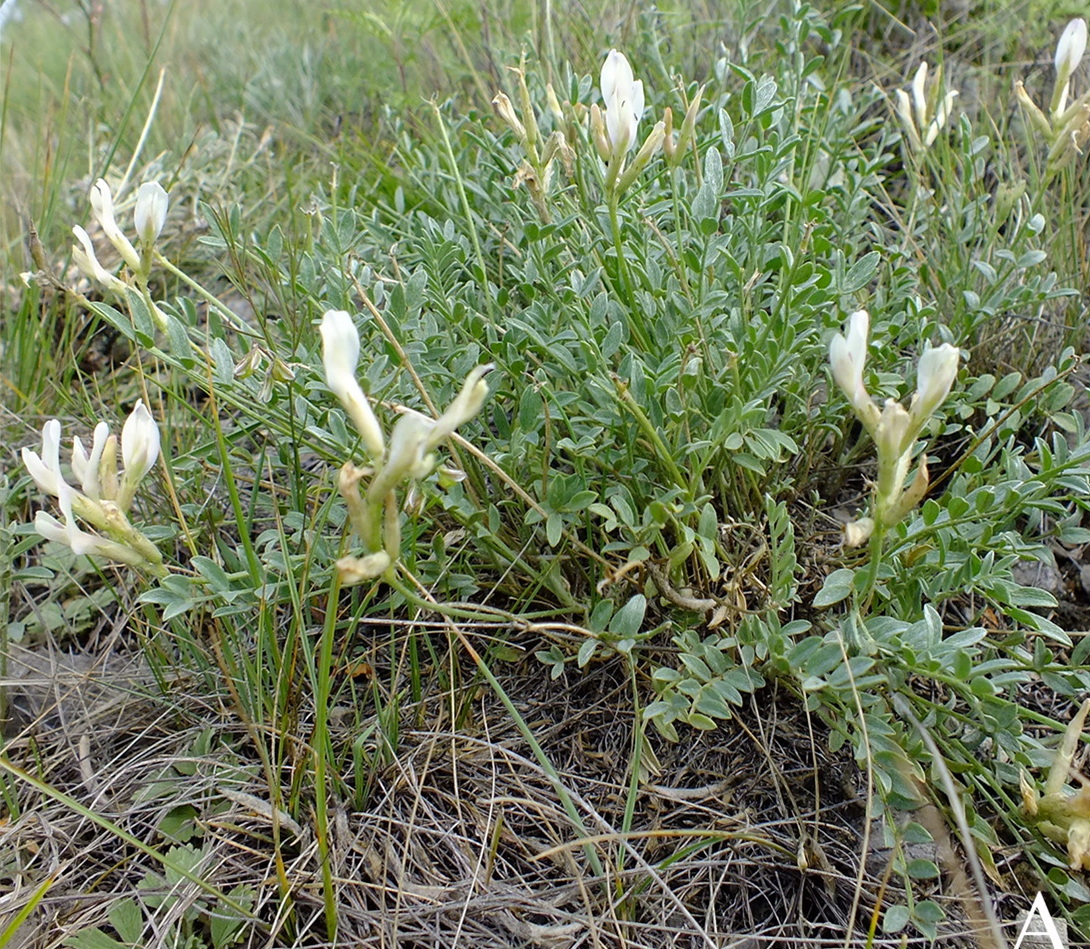FEATURES OF ACCUMULATION OF PHENOLIC COMPOUNDS IN ENDEMIC SPECIES ASTRAGALUS IONAE PALIBIN AND A. PALIBINII POLOZHIJ GROWING ON THE TERRITORY OF THE REPUBLIC OF KHAKASIA
UDK 582.736:577.13
Abstract
The features of the accumulation of flavonoid glycosides and hydroxybenzoic and hydroxycinnamic acids have been studied in the leaves of endemic Astragalus ionae Palibin and A. palibinii Polozhij of different ecological and geographical growing conditions of the Republic of Khakasia by HPLC method. Luteolin-7-glucoside, rutin, kaempferol-3-O-β-rutinoside, and 3 quercetin glycosides were identified from 8 glycosides of flavonoids from the leaves of A. ionae plants. Six flavonoid glycosides were found in the leaves of A. palibinii, luteolin-7-glucoside, rutin, kaempferol-3-O-β-rutinoside, and isorhamnetin-3-O-β-rutinoside were identified. No differences were found in the composition of hydroxybenzoic and hydroxycinnamic acids in plants of the studied taxa. Gallic, p-hydroxybenzoic, neochlorogenic, chlorogenic, caffeic, p-coumaric, and ferulic acids were identified in the leaves of A. ionae and A. palibinii. The differences between these species in terms of the content of phenolic compounds are most pronounced in the fact that A. ionae plants accumulate more luteolin-7-glucoside, the sum of flavonoid glycosides, and hydroxybenzoic acids. The content of phenolic compounds in plants of different coenopopulations is influenced by ecological and coenotic factors. In arid xerophytic and petrophytic communities more characteristic of these species, more caffeic acid and rutin accumulate, as well as the amount of hydroxycinnamic acids.
Downloads
Metrics
References
Vydrina S.N. Flora Sibiri. [Flora of Siberia]. Novosibirsk, 1994, vol. 9, pp. 20–74. (in Russ.).
Krasnaya kniga Krasnoyarskogo kraya. V 2 t. T. 2: Redkiye i nakhodyashchiyesya pod ugrozoy ischeznoveniya vidy dikorastushchikh rasteniy i gribov. [Red Book of the Krasnoyarsk Territory. In 2 vols. Vol. 2: Rare and endangered species of wild plants and mushrooms], ed. N.V. Stepanov. Krasnoyarsk, 2012, 576 p. (in Russ.).
Kuminova A.V. Rastitel'nyy pokrov Khakasii. [Plant cover of Khakassia]. Novosibirsk, 1976, pp. 40–94. (in Russ.).
Guzhva N.N., Luk'yanchikov M.S., Kazakov A.L. Khimiya prirodnykh soyedineniy, 1987, no. 6, pp. 911–912. (in Russ.).
Kiseleva A.V., Volkhonskaya T.A., Kiselev V.Ye. Biologicheski aktivnyye veshchestva lekarstvennykh rasteniy Yuzhnoy Sibiri. [Biologically active substances of medicinal plants of Southern Siberia]. Novosibirsk, 1991, 136 p. (in Russ.).
Voronov I.V., Danilova N.S., Poskachina Ye.R., Semenova V.V. Rastitel'nyye resursy, 2017, vol. 53, no. 3, pp. 425–434. (in Russ.).
Kotsupiy O.V., Shemetova T.A., Petruk A.A. Khimiya Rastitel'nogo Syr'ya, 2019, no. 2, pp. 67–72. DOI: 10.14258/jcprm.2019024263. (in Russ.).
Kotsupiy O.V., Shemetova T.A. Northern Asia plant diversity: current trends in research and conservation. BIO Web of Conferences, 2021, vol. 38, article 00063. DOI: 10.1051/bioconf/20213800063.
Sidneva O.V. Turczaninowia, 2005, vol. 8, no. 4, pp. 73–82. (in Russ.).
Kotsupiy O.V., Khramova Ye.P., Vysochina G.I. Rastitel'nyy mir Aziatskoy Rossii, 2012, no. 1, pp. 33–38. (in Russ.).
Kotsupiy O.V., Stepantsova N.V., Vysochina G.I., Petruk A.A. Izvestiya Irkutskogo gosudarstvennogo uni-versiteta. Seriya Biologiya. Ekologiya, 2018, no. 24, pp. 3–15. DOI: 10.26516/2073-3372.2018.24.3. (in Russ.).
Lomboyeva S.S., Tankhayeva L.M., Olennikov D.N. Khimiya Rastitel'nogo Syr'ya, 2008, no. 3, pp. 83–88. (in Russ.).
Karpova Ye.A., Fershalova T.D., Petruk A.A. Zhurnal stress-fiziologii i biokhimii, 2016, vol. 12, no. 3, pp. 44–56. (in Russ.).
Khramova Ye.P. Sibirskiy ekologicheskiy zhurnal, 2022, no. 5, pp. 580–594. DOI: 10.15372/SEJ20220508. (in Russ.).
Krasnaya kniga Respubliki Khakasiya: Redkiye i ischezayushchiye vidy rasteniy i gribov. [Red Book of the Republic of Khakassia: Rare and endangered species of plants and mushrooms], ed. Ye.S. Ankipovich. Novosibirsk, 2012, 288 p. (in Russ.).
Kuz'micheva N.A. Vestnik farmatsii, 2001, no. 1–2, pp. 62–69. (in Russ.).
Boyarskikh I.G., Vasil'yev V.G., Kukushkina T.A. Khimiya Rastitel'nogo Syr'ya, 2018, no. 2, pp. 89–96. DOI: 10.14258/jcprm.2018023452. (in Russ.).
Polyakova L.V. Flavonoidy v prirodnykh i introduktsionnykh populyatsiyakh predstaviteley sem. bobovykh Sibiri: avtoref. dis. ... dokt. biol. nauk. [Flavonoids in natural and introduced populations of representatives of the family. leg-umes of Siberia: abstract dis. ... doc. biol. sciences]. Novosibirsk, 1993, 32 p. (in Russ.).
Minayeva V.G. Flavonoidy v ontogeneze rasteniy i ikh prakticheskoye ispol'zovaniye. [Flavonoids in plant ontogenesis and their practical use]. Novosibirsk, 1978, 255 p. (in Russ.).
Kulbat K. Biotechnology and Food Science, 2016, vol. 80, pp. 97–108. (in Russ.).
Karakulov A.V., Karpova Ye.A., Vasil'yev V.G. Turczaninowia, 2018, vol. 21, no. 2, pp. 133–144. DOI: 10.14258/turczaninowia.21.2.14. (in Russ.).
Morreeuw Z.P., Castillo-Quiroz D., Ríos-González L.J., Martínez-Rincón R., Estrada N., Melchor-Martínez E.M., Iq-bal H.M.N., Parra-Saldívar R., Reyes A.G. Plants, 2021, vol. 10, no. 4, article 695. DOI: 10.3390/plants10040695.

Copyright (c) 2024 chemistry of plant raw material

This work is licensed under a Creative Commons Attribution 4.0 International License.

This work is licensed under a Creative Commons Attribution 4.0 International License.
The authors, which are published in this journal, agree to the following conditions:
1. Authors retain the copyright to the work and transfer to the journal the right of the first publication along with the work, at the same time licensing it under the terms of the Creative Commons Attribution License, which allows others to distribute this work with the obligatory indication of the authorship of this work and a link to the original publication in this journal .
2. The authors retain the right to enter into separate, additional contractual agreements for the non-exclusive distribution of the version of the work published by this journal (for example, to place it in the university depository or to publish it in a book), with reference to the original publication in this journal.
3. Authors are allowed to post their work on the Internet (for example, in a university repository or on their personal website) before and during the review process of this journal, as this may lead to a productive discussion, as well as more links to this published work.











